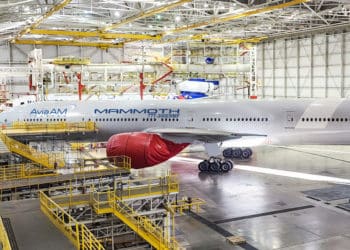Consultant Insight: Amazon’s logistics network gets the holiday hiccups

Amazon began the holiday season strong by announcing that Cyber Monday was its single biggest shopping day in the company’s history, based on the number of items ordered worldwide. Meanwhile, company leadership stressed the focus on catering to increasing e-commerce sales, with Worldwide Consumer CEO Jeff Wilke saying, “We’re focused on making this holiday season more convenient than ever for our customers, especially given how short this holiday shopping season will be.”
However, soon after Amazon’s announcement, social media lit up with commentary about delayed deliveries. Amazon quickly responded:
“We are off to a record-breaking start to the holiday season and on peak shopping days, delivery promises vary and may be longer than normal based on order volume and the fulfillment and delivery capacity available in a given area. “The winter storms that swept across much of the country at the same time also extended delivery times in some areas. We will work directly with customers who are experiencing an issue with their delivery.”
The delivery snafus may have led industry observers to experience a bit of déjà vu from six years earlier, when UPS and FedEx were hit hard by bad weather and last-minute online shopping, causing millions of packages to be late for Christmas. Many of those late packages were purchased from Amazon, and since then, Amazon has developed its own logistics network, built fulfillment facilities, become a freight forwarder and freight broker, leased aircraft and introduced a program that allows contractors to start businesses delivering packages in vans.
Taking the reins of its own delivery network means the pressure is on Amazon like at no other time in its history. According to consulting firm Bain & Co., 42% of all online sales this holiday season are expected to be attributed to Amazon.
Amazon’s announcement that it would provide next day delivery to its Prime members has also pressured the company, financially and in terms of service level—and let’s not forget FedEx’s decision this year to end its express and ground contracts with Amazon. While FedEx’s role as an Amazon carrier has diminished over the years, the loss of that capacity surely is felt by Amazon as it leans more on its own network for deliveries. Rakuten Intelligence estimates that Amazon now handles last-mile deliveries for almost 48% of its own packages, up from more than 20% in January 2018.
However, the cracks in Amazon’s logistics network are emerging, including worker injury rates, overwhelmed fulfillment facility workers and air carrier partners’ need for more pilots.
Meeting staffing requirements for over 100 facilities in just the U.S. is tough for any company. For the holiday season, Amazon announced plans to hire upwards of 200,000 seasonal workers. Did they really hire that many? I’m not so sure. As for ongoing staffing of facilities, robots can’t be implemented soon enough to satisfy demanding quotas as well as increasing volumes. Fulfillment costs continue to rise for the company, up 22.9% for the third quarter and up 16.8% year-to-date through September.
Meanwhile, Amazon Air continues to expand as records indicate that Amazon’s air carrier partners have need of more pilots. Our sister publication Cargo Facts notes that Amazon has transferred two planes from Atlas to ATSG. No reason was given as to why this was done. However, an Amazon spokesperson said of the shift, “We are constantly innovating on behalf of our customers, and from time to time that means making adjustments to our air network. Two aircraft previously assigned to Atlas will now be operated by another carrier.”
The relationship between the air carriers and pilots is contentious at best. Pilots’ unions have been in ongoing disputes with Atlas and ATSG for more than five years over issues including pay, scheduling and retirement contributions. Recently, pilots at ATSG-owned ABX Air cast a vote of no confidence in the airline’s management as negotiations over a new contract continue.
Meanwhile, Amazon’s air volumes continue to rise. Estimates from Cargo Facts Consulting indicate year-to-date through August, Amazon’s air volumes were an estimated 1 billion pounds, a 29% increase over the same period in 2018.
In addition to Amazon’s own air network, UPS appears to have picked up a good amount of volume carried previously by FedEx Express. While we are not sure how much Amazon volume is moved by UPS, year-to-date, UPS’ average daily volumes for Next Day Air are up 21% with the biggest year-over-year increase during the second quarter (period ending June 30), in which UPS recorded a 30.3% increase in Next Day Air volumes. FedEx Express’ contract with Amazon ended on June 30. Did Amazon move volumes to UPS prior to the end of the contract?
In any case, Amazon, the logistics provider, is under tremendous pressure this holiday season. Delays the first full week of the holiday season are concerning, but more concerning will be any other potential disruption in its network the nearer we get to Christmas Day.




